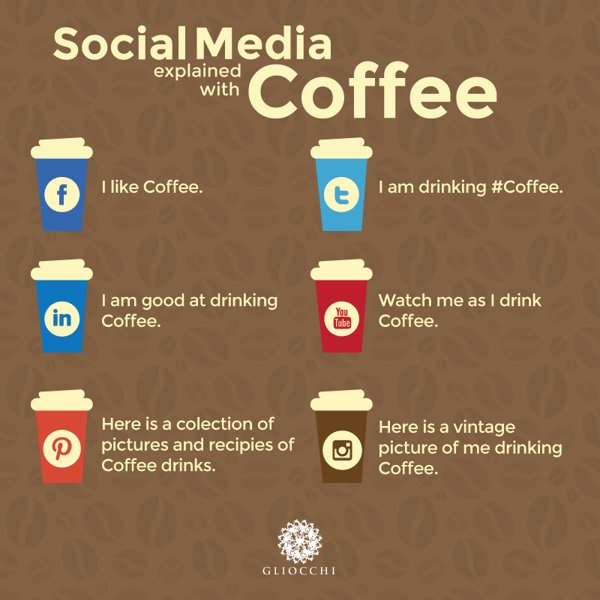
Marketing on social media can be daunting for businesses just getting started. Unlike advertising in trade publications and other traditional media, social networks enable a two-way conversation. You post and promote your business’s marketing messages, and your followers can reply, share, and comment on your posts.
Such public conversation can be scary for a company leader who may not be comfortable with customers having such an open platform. Still, there are many positives:
● Increase awareness and engagement with your brand
● Enhance your brand’s authority in your industry
● Drive website traffic
● Generate leads and sales

Each social media network has its own “culture” for how people interact. Just as you wouldn’t wear shorts and a t-shirt to a black-tie dinner (except maybe one of those cool tuxedo t-shirts), the nuances of “socially acceptable behavior” on each social channel matters. Here are some tips for how to represent your business on each.
Social networks are no longer the free marketing platforms that they once were, Facebook included. Sure, you can still post to your company’s Facebook page for no charge. But due to their evolving business model, your posts are likely to be excluded from your followers’ news feed unless you pay for a boosted post or other advertising. In addition to the extended reach, another advantage to paid social is the range of targeting options available to display your social content to exactly the right viewer.
Facebook can be either personal or professional but tends to be casual in nature. A good rule of thumb is to post three to five times per week with a mix of content about your business as well as shared content from other relevant and trusted sources.
Businesses can drive visitors to their website by posting an excerpt of a blog or web page with a link. But don’t be afraid to show the personal side of your business either. A selfie with a customer or pictures from the company picnic can make excellent content for Facebook.
LinkedIn is the business social network. Use this channel to connect with colleagues, as a sales tool to prospect for potential customers, and to enhance your brand’s authority within your industry.
The LinkedIn news feed generally moves more slowly compared to Facebook, so publishing one to three posts per week is enough for most companies. Just hired a new employee, or announced a new product? Perfect. Take a professional tone when posting on LinkedIn. No foodie pix here (unless that’s your business).
Twitter users live in their news feeds, so it moves faster than the other social channels. Because of this rapid decay rate, it’s acceptable to publish two to three (or more) posts, or “Tweets,” each day on Twitter. But keep it brief. While you can certainly get creative and witty in your Twitter content, “tweets” are limited to 280 characters, including links. So they are, by necessity, concise.
One way to use Twitter for your business is to tweet a short excerpt of your blog article with a link to the full article. Use a link shortening service like bit.ly to reduce the number of characters used by the link URL.
Instagram is all about pictures (and videos) and is a great channel to show off your company’s culture and people. Use Instagram to showcase your excellent customer service by including photos of staff, special visitors or even content from customers, like testimonials or product reviews. If customers frequently visit your business, consider building an Instagram photo-friendly space that includes your branding, to encourage customers to snap a selfie and post it to their own IG account in exchange for a discount or special offer.
Another feature of Instagram is stories. Instagram stories are a great way for your company to show its personality by making a short loop of your featured pictures and videos. Here are a few ideas:
● Day-in-the-life
● Behind the scenes
● People, events, and products
● Trade shows or other events in progress
But since stories disappear after 24 hours, use them to share moments versus posts you want to keep on your profile page.
YouTube
Studies show that 54% of consumers want to see more video content from a brand or business they support. Owned by Google, YouTube is the #2 most popular search engine in the world. Bottom line? People like to watch online videos, and that helps your brand with search engines, so your company should be producing video content. A few topic ideas include:
● How-to videos
● Product demos
● Interviews with your company’s experts or customers
● Shop tour
You don’t need a big budget to produce great quality videos for YouTube. These days just about everybody has a decent video camera and simple video editing software built in to their smartphone. That said, two factors that will make or break your smartphone video production are sound and lighting. Shoot outdoors or invest in an inexpensive LED light panel and a microphone that will plug into your phone. See our tips for shooting video like a pro.
Pinterest is the social network for “pin-spiration.” In its recent stock offering, Pinterest describes itself as a visual search engine and “productivity tool for planning your dreams.” Like a cork board, “pinners” create Pinterest boards and “pin” pictures of whatever inspires them, from arts and crafts, to garden and home improvement, to wedding and party planning, and more.
Their inspiration often results in buying. According to Pinterest, 55% of Pinners are specifically looking for products, and 83% of weekly users have made a purchase based on content they see from brands on Pinterest.
Your company’s Pinterest page is a fantastic platform to inspire your customers to do more with your products. For example, a manufacturer of home improvement products or building supplies could pin photos of beautiful home renovations that feature their products.
Bonus tip: use #hashtags
Create a hashtag (#) specific to your business and encourage your social media followers, customers, and employees to use it in their posts. Use the hashtag when you repost content to your feed. This will automatically create a clickable link so people can see all the posts that use that hashtag. It also provides a simple way for you to identify social media content that references your brand.
Takeaway
We’ve touched on six of the most common social media networks for businesses. Whether you’re just getting started, or have had a social presence for a while, you don’t need to be on all of them. Pick one and do it well before adding more to your social media marketing strategy. Wondering which to start with? As with any of your marketing, be where your customers are. Ask them which social networks they use and start connecting.
Heinzeroth can develop a social media marketing strategy that’s right for your business. Contact us today to learn more.

